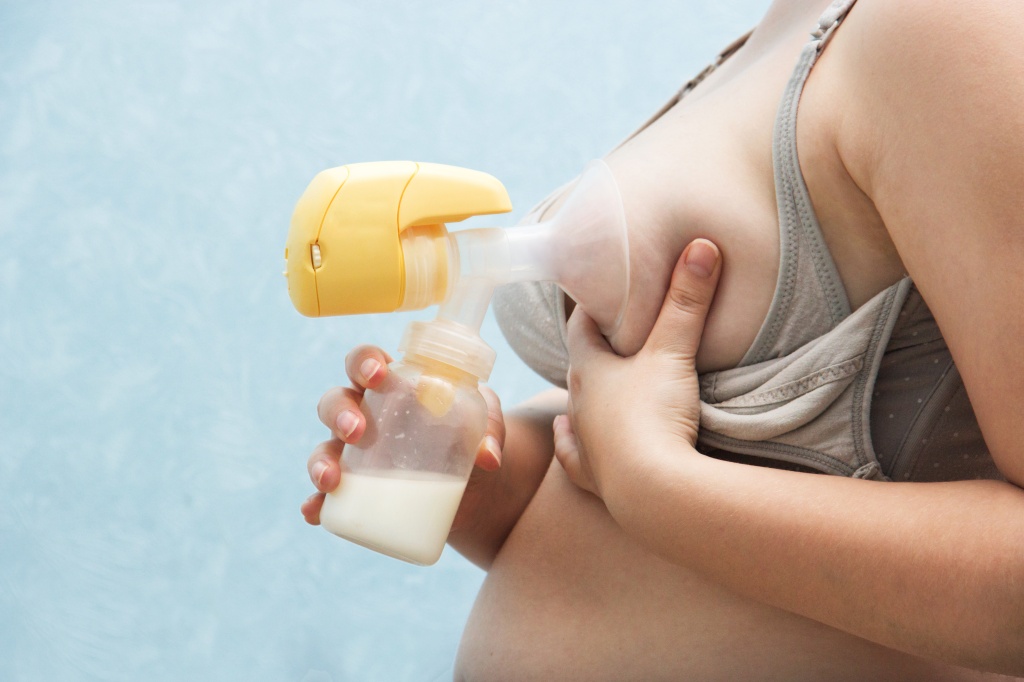
Pumping, Bottles and Maintaining Your Milk Supply - GUEST POST
Pumping, Bottles and Maintaining Your Milk Supply - GUEST POST
This article was written and provided by Ali Reynolds of Valley Lactation. Ali is a local CLC who also teaches our monthly breastfeeding class.

Congratulations! You made it through pregnancy, birth and the first few weeks of leaking boobs, engorgement, clogged milk ducts, blistering, tears (so. many. tears.) and all the things that may or may not have come with breastfeeding. Hopefully, you’ve begun to feel like you’re getting the hang of it. Now here you are, a brand new person on the other side of birth, preparing to share the feeding responsibilities with others. Maybe you’ll be returning to work soon, planning a date night or Moms’ night out, or maybe you’re just ready for a few solid hours of uninterrupted sleep while your partner handles a few feedings. Whatever the circumstances, this stage can present a whole new series of challenges.
Scroll down for resources, tips, and a few of my favorite products!
Choosing the Right Pump
Not all pumps are created equal. No two breasts are exactly alike. Not all bodies respond to pumping. Find a pump with various flange sizes (that’s the piece that looks like a funnel) so that you can find the best fit for you. Many pump manufacturers provide sizing guides on their websites. Generally, you’ll need about 2mm of space around your nipple on the inside of the flange (the “tunnel” that leads to the bottle). Follow the sizing guide for your pump to make sure that your flange isn’t too tight or too loose. You shouldn’t feel any rubbing or pinching, and the suction shouldn’t be painful when the pump is running. Try adjusting the suction one click at a time until you find the best setting for you.

Consider the amount of milk you’ll need to collect and store. If you’ll be returning to work full-time, a double electric hospital grade pump is probably your best bet. For others, a small hand pump and some gentle hand expression might do the trick.
Which Bottle is Best for Breastfeeding?
There are so many bottles out there. How do you know which one is right for you? What if you’ve tried a few and your little one wanted nothing to do with any of them?
- Look for a bottle with a nipple that encourages a wide latch, similar to breastfeeding.
- Choose a nipple with a slow flow. Your breast milk takes a few seconds to start flowing. We’re trying to achieve the same effect with the bottle.
- If all else fails, just know that there are other ways to feed a baby. If yours refuses to take a bottle, try using a small cup. You might be surprised at how well they manage using a cup like a big kid!

Is Nipple Confusion Really a Thing?
Ahh, the dreaded “nipple confusion”. The bad news? It is a real thing. The good news? It can be avoided. When a baby takes a bottle while laid back, with the bottle pouring straight down into their mouth, they are forced to swallow in order to avoid choking. That means they may take in much more than they need or want, causing gas, spit-up, colic, and yep… You guessed it! Nipple confusion. Practicing paced bottle feeding can help. Paced feeding mimics the way that babies feed at the breast. They control how much milk they take in and how quickly. They take breaks, stopping when they need to rest or burp. Baby feeds at his own pace, just like he does at the breast.
Talk to your partner and caregivers about paced bottle feeding. Not only will this help prevent nipple confusion, but it will also ease your worries as you work to keep up with the demand of pumping enough milk while you’re away from Baby.

How Much Milk Do I Really Need to Pump?
We’ve all seen the Pinterest-worthy photos of the deep freezer full of frozen breast milk. It can be discouraging to see when your stash consists of just a few bags of liquid gold.
But have no fear! Those moms may have enough milk to feed a whole daycare, but they’ve got their own set of problems *cough* oversupply? *cough, cough*. You, on the other hand, have the perfect amount of milk for YOUR baby.

1) Pump when you feel most full (usually first thing in the morning).
2) Store your milk in small quantities, so you don’t end up thawing more than you need for one feeding.
3) Schedule pumping sessions when your baby usually takes a bottle.
Keeping Your Supply Up
If you’re going back to work and worried about losing your milk supply, you are not alone. But not to worry. The basic rules of milk production still apply. It truly is all about supply and demand.
- Upon returning home, plan on relaxing for a bit. Nurse your child as soon as they are ready, and on demand throughout the night. Talk to your daycare or care provider about taking a few minutes to nurse before you head for home.
- The laws are on your side. You have the right to a private pumping space while you’re at work. But even if you’re finding it hard to pump at work, your body will continue to keep up with the demand of nighttime feedings.
- When pumping, try keeping pictures, videos, or a piece of baby’s clothing (with their scent) on hand to help you relax and think about nursing your baby. This will help your letdown come easier, even when Baby isn’t with you.

A Few of My Favorite Products
(Because shopping, obvi.)
- The Kindest Cup: This thing is genius. It collects milk, AND serves as a cup to feed milk to Baby. It suctions to your breast and collects leaking milk during letdown, fits neatly in your bag for hand expression on-the-go, and is made from 100% silicone for easy cleaning.
- The Milkies Milk Saver: Collect leaking breast milk while out and about by slipping this handy tool inside your bra. You can save and store that milk for later use.
- Lansinoh Glass Baby Bottles: These bottles come with a nipple that is great for breastfed babies, as it encourages a wide-open latch. The glass bottles are safe and easy to clean.
- The Tiny Cup: This little cup is perfect for feeding Baby without a bottle. Available at my favorite local baby store, Colorado Baby!
- Milkies Milk Trays: Trays like these make it easy to freeze small quantities of milk, so you can thaw only what you need for a feeding. Nothing goes to waste!
And remember… You’ve got this! Try to relax but don’t be afraid to ask for support. Find a lactation specialist to help you find the right fit. Know your rights when it comes to pumping at work. Talk with your care providers. Ask for help when you need it.
You are doing a wonderful job.
– Ali

